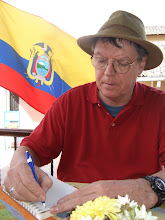
I have had a fascination with Barbie dolls for a very long time. It is not what you may think. I was always a solid GI Joe guy in my youth with no regrets. It is more about what it represents. I will use the term “she” because we tend to think of Barbie as a real person. However, Barbie as an art medium has unlimited possibilities. I remember talking with an artist, Paul Hoedecker, many years ago about a Flying Barbie piece he had done with Barbies, circling on a motorized circle frame hanging from the ceiling. I was intrigued.
I set out to find my Barbies. The cheap ones! My search began in Harper’s Ferry West Virginia at a local flea market. I spotted a dealer with a box of Barbies and found about 17 to my liking. The duel commenced. We haggled, we fought, we accused each other of being crazy an unreasonable. The dealer wanted $10 each. I wanted them for $2 each. She countered that she couldn’t because the Barbies were her daughters and had sentimental value. I responded that it was irrelevant whether you sell your sentiment for $2 or $10 and if sentiment was the issue what was she doing selling them anyway? We parted company.
A couple of weeks later, I was at the Newfane flea market. Again, I spotted a dealer with a small box of Barbies. As Barbie aged, she must have enjoyed living in a box with other clones. Whatever! I was looking at about eleven and offered $25. The dealer countered with $45 and a lecture on the value of Barbies as collectables. I mentioned that collectables did not live in a box and walked away. I overhead the dealer tell his friend that I knew nothing about the values or antiques and that I was a jerk.
Five minutes later, I came by a lady doing her yard sale at the flea market. You guessed it. She had a tubberware container full of Barbies. As I looked through it, the lady said, “You can have the whole thing for $5.” The price was right. Done deal! I didn’t count them until I got home. It was over 30.

Now, what to do? I have a small box coffin about her size. I’ll fill it partially with earth painted pink. In goes the Barbie with small fangs that I will fashion for her. I will call it Dracula Barbie. It is on my list of To Do’s.[It is not on the TO Do anymore. Got it done over July 4th weekend.] I have other ideas … for just the heads maybe. I have used a couple of the Barbie arms and legs for miscellaneous work.
[Had another idea just before the 4th. Houdini Barbie. Used a pink box, painted a blue, oxygen-deprived face, tied hands, and wired and locked box. I think it may have been Houdini Barbie's last Beijing performance.]

But for now, Barbie Bouquet. A nice vase … some greenery … a jaunty selection of Barbies … and there you have it … Barbie Bouquet. [Lastly, I have done some canning jars with Barbie heads ... and hot peppers cause sheis so hot ... and some canned arms and legs. Also set up Meatgrinder Barbie. When you grind the heads, golden thread is produced. ]

 Voyage on the River Styx
Voyage on the River Styx











